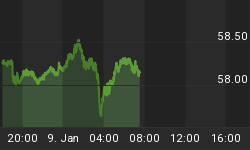The U.S. Dollar traded substantially higher as trader appetite for risk diminished amid news that the global economy would recover at a much slower pace than previously estimated. Furthermore, news that China, Russia and India are prepared to introduce a proposal to the G-8 that calls for a central bank reduction of Dollars kept in foreign currency reserve.
The GBP USD declined hard on Monday on rumors the Bank of England would increase its quantitative easing program to $40 billion. The main trend turned down on the trade through the last swing bottom at 1.6187 but could not accelerate to the down side as this pair reached a technically oversold area.
Based on the first leg down from 1.6743 to 1.6094, traders should look for a selling opportunity on a rally back to 1.6419. If resistance is found at this price then the next move down should take the GBP USD to 1.5770.
The USD CAD tried to accelerate to the upside on its breakout through the 50% price at 1.16450 but the buying dried up and the market posted a closing price reversal top. A breakdown through 1.1585 will confirm the reversal top and indicate the possibility of a further decline to 1.1231 to 1.1125. The short-term trend will turn down when this pair crosses the last swing bottom at 1.1437, but the longer-term charts indicate that this market is likely to attract buying following a test of this important retracement zone.
Fundamentally, USD CAD traders are still concerned about the possibility of a "verbal intervention" by the Bank of Canada in an effort to control the rise in the Canadian Dollar. The BoC feels that a higher-priced currency will curb demand for Canadian exports.
The USD JPY traded sharply lower for a couple of reasons. The first and main reason is flight-to-safety. The second reason is the call for nations to diversify away from the U.S. Dollar.
Global equity and commodity markets were down sharply on Monday as traders liquidated their positions in higher-priced, higher-yielding assets. The current weakness in the equity markets was triggered by a larger than expected U.S. job loss in June. This news was reported on July 2nd but many traders took the day off ahead of the U.S. market holiday on Friday. The weakness overnight triggered a lower opening in the European and Asian markets as traders who missed the move on Thursday picked up the selling where it left off on Thursday.
The USD JPY broke sharply lower from the start in Asia as traders sought the safety of lower yielding assets. This break was a continuation of the move from the top which started in early June when the equity markets topped and Thursday's flight-to-safety rally in the Yen following the release of the bearish U.S. unemployment number.
The weakness in the equity markets caused Japanese investors to repatriate investments in higher yielding assets which were purchased to combat the excessively lower yields in Japan. Traders who borrowed Yen at cheap rates in an effort to leverage their investments in higher risk assets bought Yen to pay back loans.
Flight-to-safety buying is not the only reason for the rally in the Japanese Yen. Longer-term traders believe that the Japanese Yen will benefit if the central banks get behind the movement to reduce the U.S. Dollar's role as the world's reserve currency.
China, Russia and India are expected to introduce the topic of reducing the world's reliance on the U.S. Dollar as the premier currency at this week's G-8 meeting. Russia commented over the week-end that the system is "flawed." India's finance minister is urging his nation to reduce its U.S. Dollar holdings. The French also joined the movement by stating their opinion that the system should be improved.
The best sign that the trend is beginning to shift away from the Dollar was the move by three Chinese corporations to settle imports and exports in Yuan. This move marked the first time that contracts were settled this way and was designed to make the Yuan more attractive to central banks.
The Yen could benefit if the Dollar loses its luster as the most popular reserve currency because central banks are likely to spread the reserves among the Yen, Yuan, Euro and U.S. Dollar.
Technically the main trend turned down on the trade through 94.87. There was no acceleration to the downside following a penetration of this number but the weak close put this pair in a position to challenge the last two main bottoms at 94.45 and 93.84.
Losses in the USD JPY may be limited if the Bank of Japan issues commentary regarding the rapid appreciation in the Yen. Recent rallies have been curbed by commentary from the BoJ as they expressed their concern that a higher priced Yen would hurt exports. This form of "verbal intervention" has been highly effective in the past when volatility and prices rose too rapidly.
















